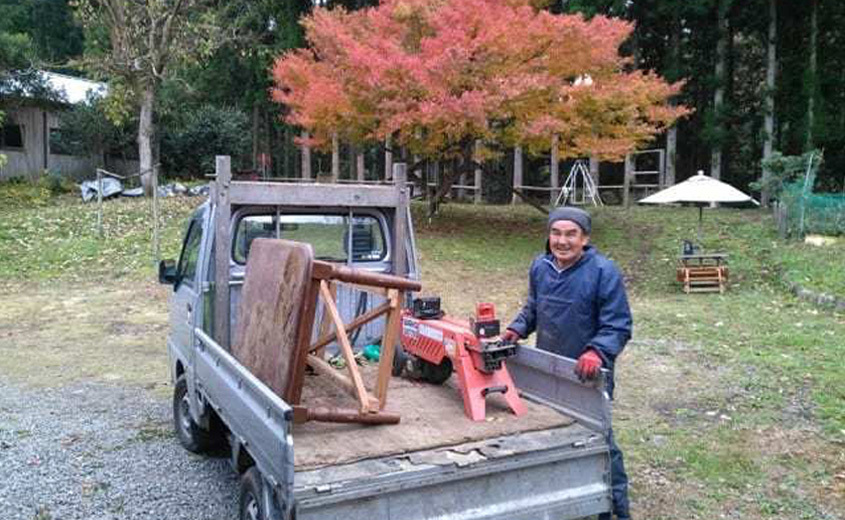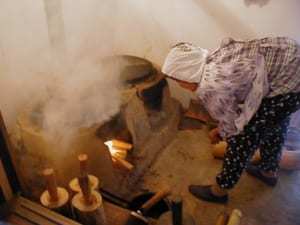There is a huge contrast between Japan’s fast-paced modern cities and the slow rural communities like Miyama. This is reflected in the things people wear, the houses they live in, the things they eat and even the cars they drive.
When it comes to vehicles in rural Japan, the Kei truck rules supreme; if you take a trip to Miyama or any other countryside destination you can’t fail to see one. Japan has some of the smallest cars in the world, and a Kei car has by definition a tiny 660cc engine. That means the engine is about half the size of the smallest small cars on the market in Europe or the USA.
The Kei truck is essentially a mini-truck with a tiny engine and, as impractical as that may sound, it’s actually an amazingly versatile and useful creature. Most households have one and use it as their everyday runabout and for carrying just about anything, from the daily shopping to transporting the seedlings from greenhouse to rice field, or even moving a (small) truck-load of fresh timber from the forest to the local lumberyard.
When it comes to cars, the Japanese love to customise and the Kei truck comes in many different forms. A mini-crane is commonly bolted onto the back by hunters for getting larger animals up onto their truck, which comes in handy when the day’s catch includes a 120-kilo wild boar.
Some Kei trucks even have a cabin added on the back to allow you to sleep in them; this style of car has become popular for people who regularly go on business or leisure trips and want to cut down on hotel costs, like your very own mobile capsule hotel! One gentleman in the local region built his own cabin on the back, complete with a thatched roof. Doesn’t get much more customised than that.
Along with the ubiquitous Kei trucks, another popular countryside item is the Tenugui. This is basically a thin cotton cloth that is like an equivalent of the Swiss army knife for clothing. It is commonly worn around the head or neck to absorb sweat when doing manual labour. When it’s very hot in the summer, you dip your Tenugui in cold water and put it on soaking wet in order to keep cool. They can be used as an impromptu bandage, carrier bag and even a net to catch fish. Each region of Japan has their own particular style of folding it and putting it on the head. This is the Miyama style for Tenugui.
Another fashion item you might see in rural Japan is the Monpei, which is basically a loose-fitting pair of trousers that are easy to move about in and used for cleaning, gardening and various other types of work. They often have traditional patterns on the cloth and many people make their own Monpei, which is a typical feature of Miyama culture as well as Japanese rural culture in general. Why buy things when you can make them?
Until tunnels and cars came to Miyama some 60 years ago, it was a major mission to get out of the valley to go and buy something from a bigger city. This geographical isolation created a self-sufficient and resourceful culture that can still be found in the region today. Monpei are just one of many everyday items that people here often make themselves, including baskets, sandals, chopsticks, spoons, pottery, metal and wooden tools and much more.
In fact the word for farmer in Japanese, Hyakushou (百姓), translates as ‘100 jobs’ or ‘100 techniques’, meaning a farmer has to master all kinds of crafts and knowledge in order to thrive in an isolated rural environment.
If you would like to try your hand at some of the skills needed for life here in the country, you can participate in a cooking experience activity or a craft workshop. Check out the activities page on the Miyama website. If you visit Miyama or any area of rural Japan, be sure to keep an eye out for Monpei, Tenugui and the ever-present Kei trucks.











